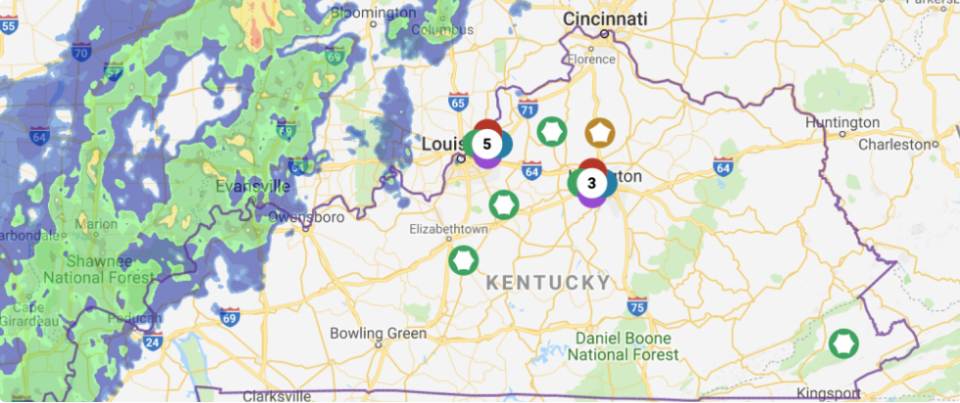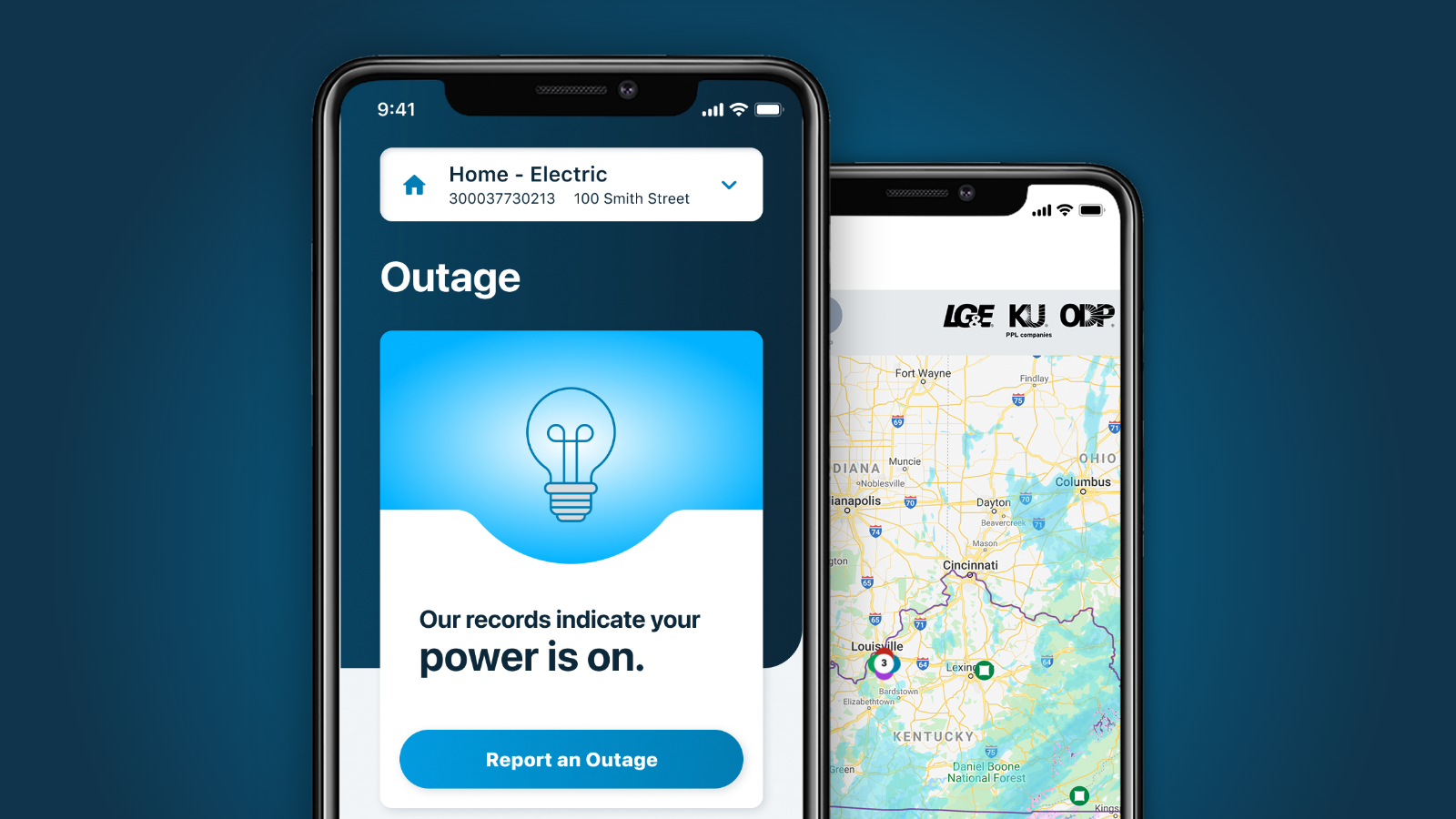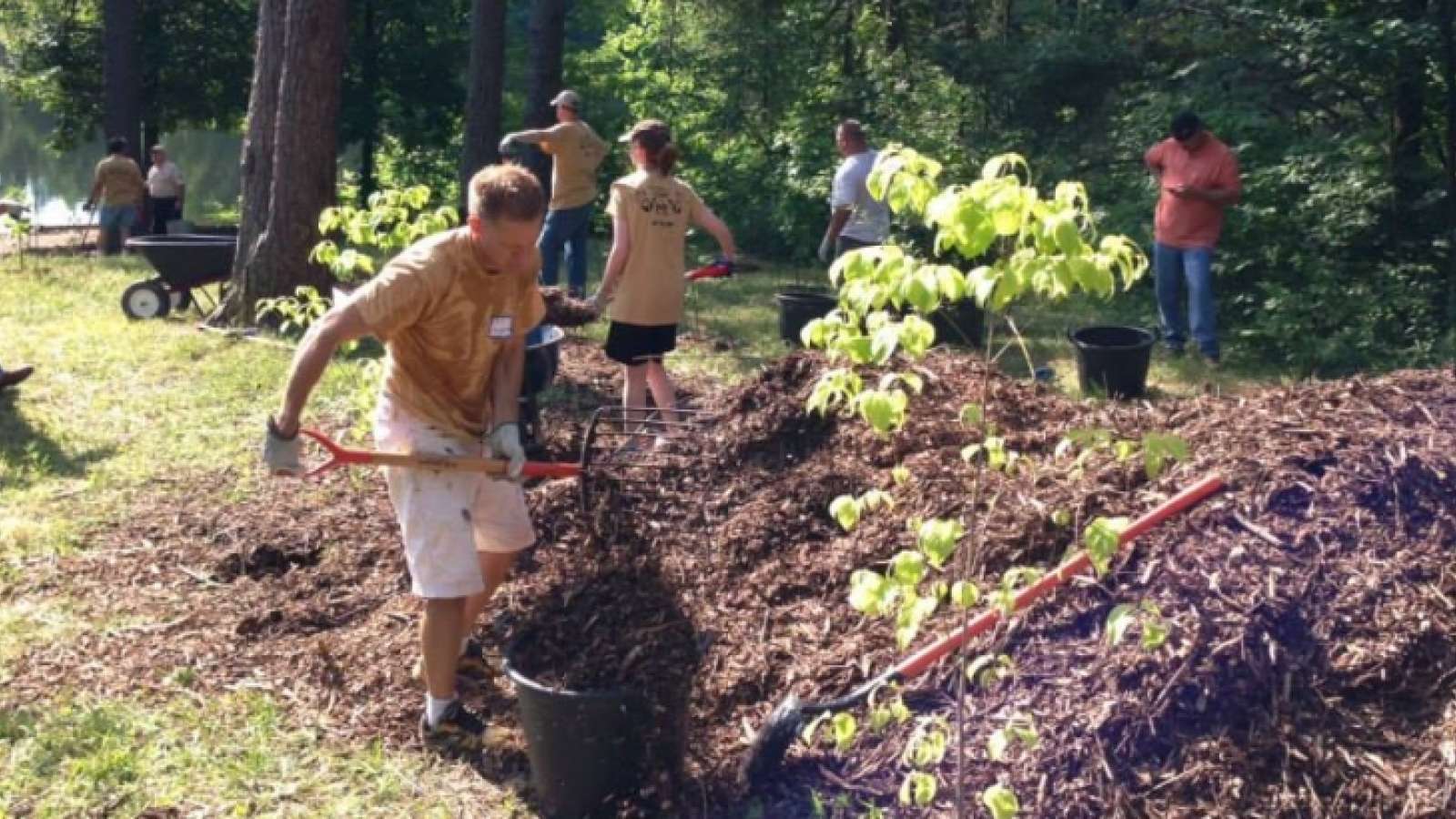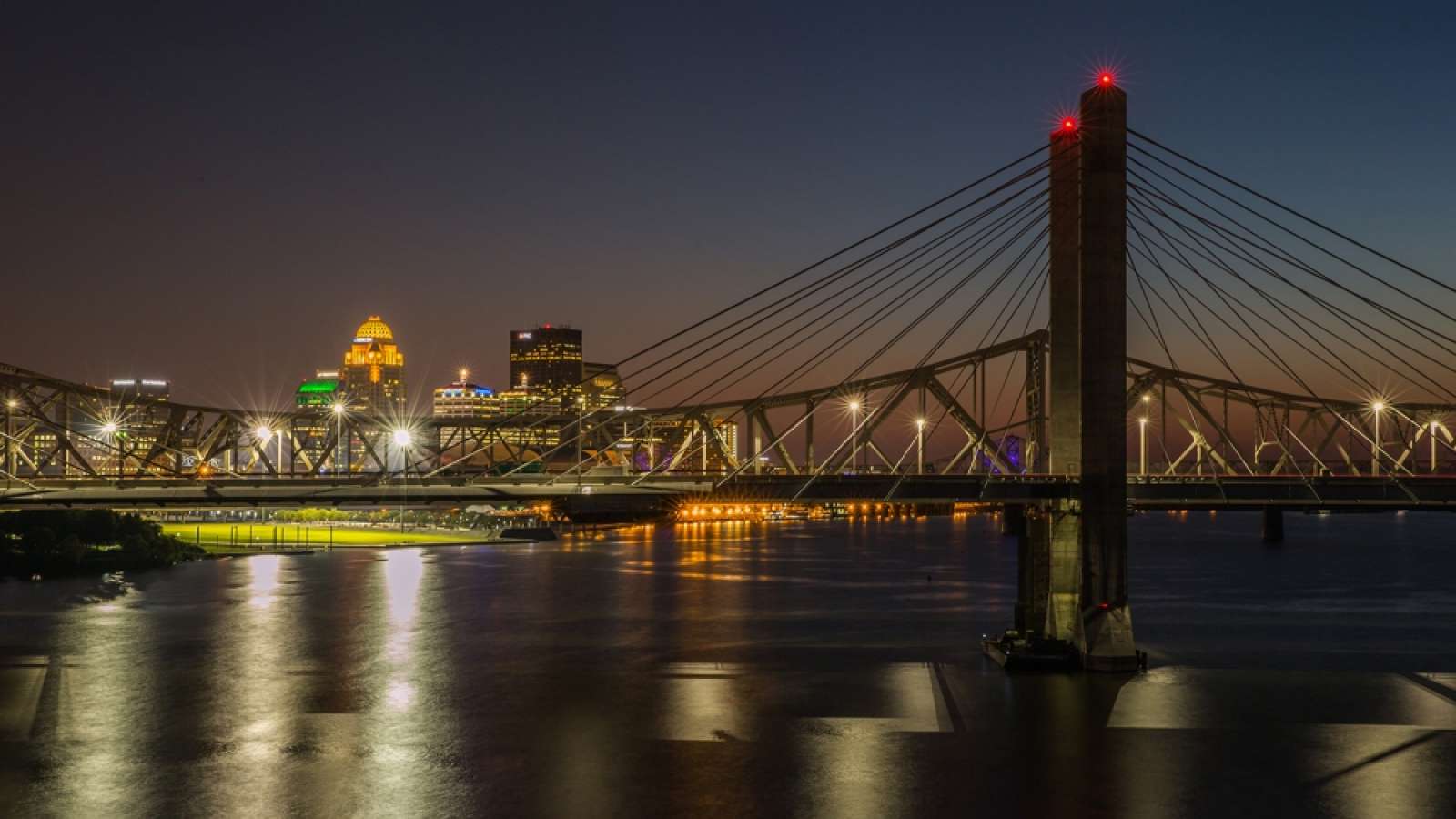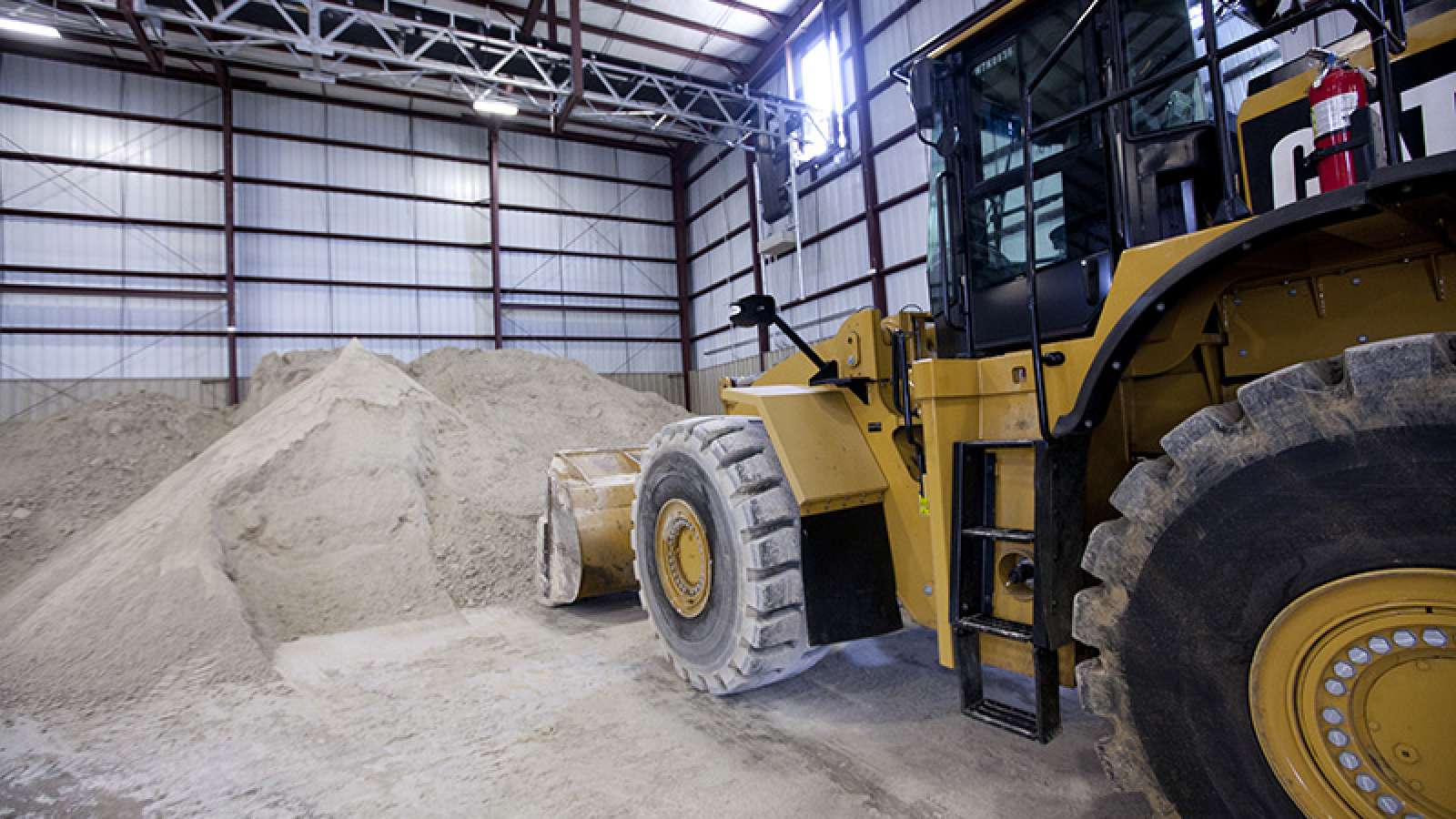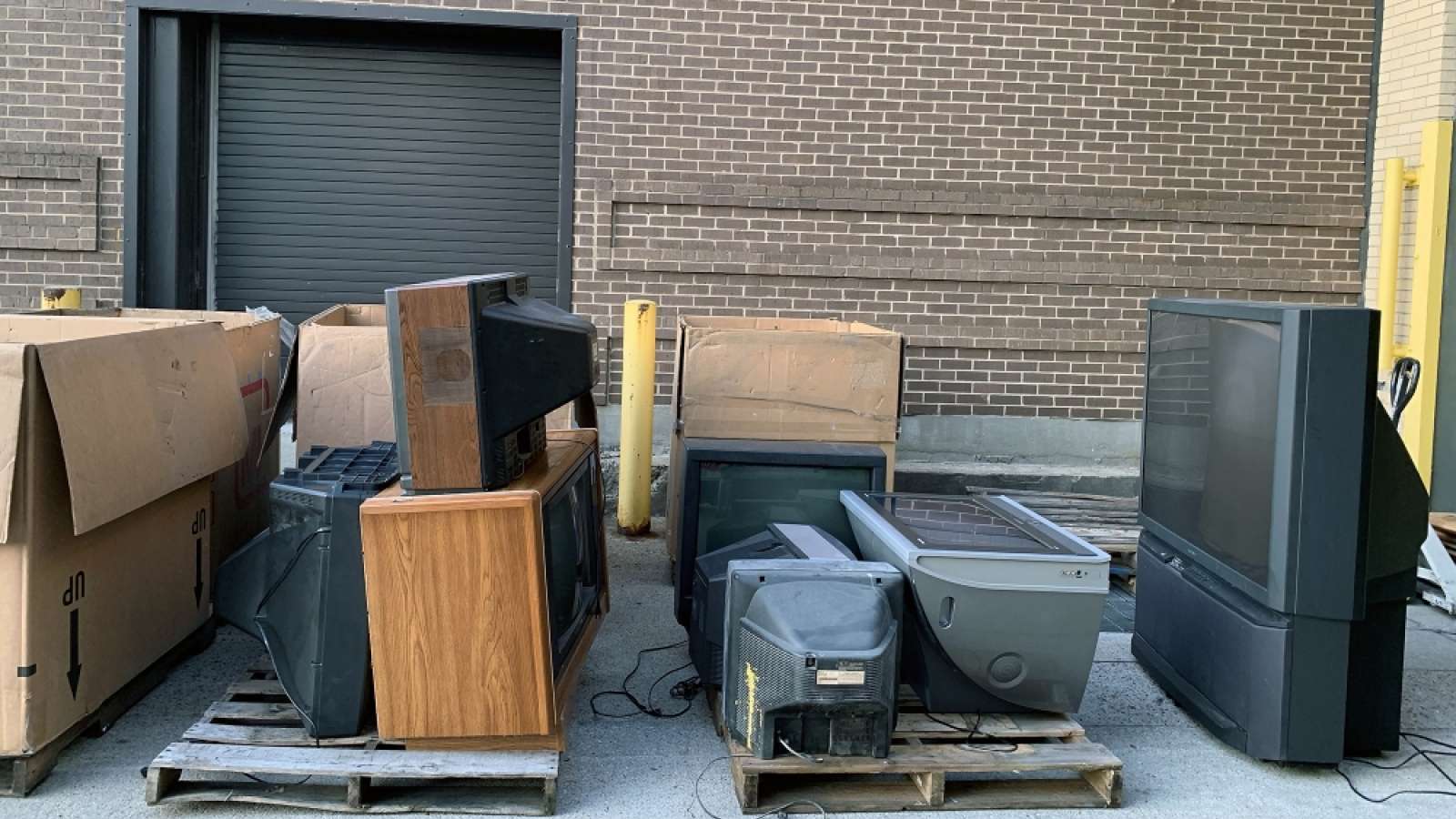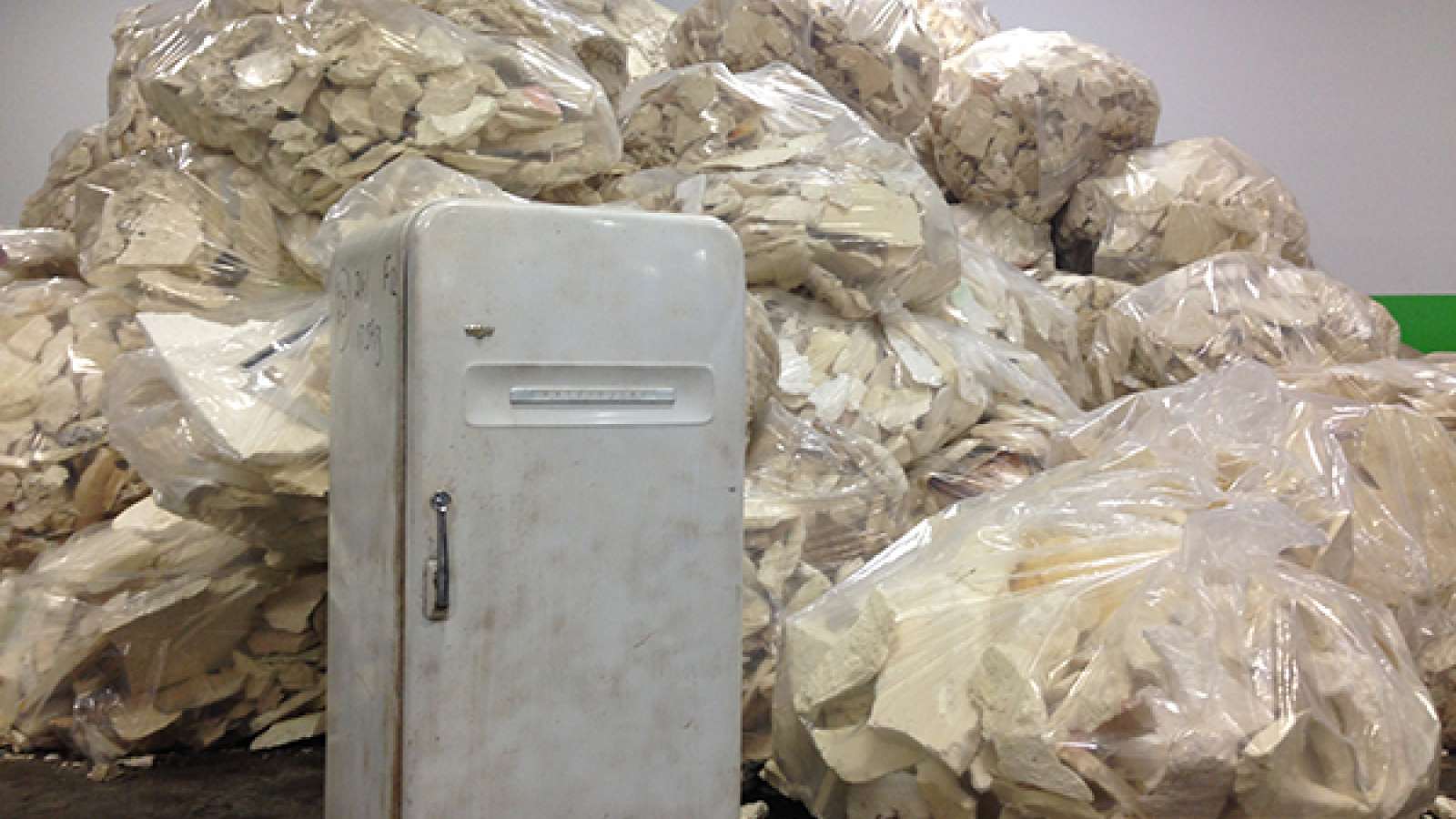What are coal combustion residual materials?
These materials are left over after coal is burned to make electricity. There are different types called fly ash, bottom ash and gypsum. They can vary slightly, depending on where the coal was mined and how deep it was beneath the ground’s surface.
- Since 2003, more than 23 million tons of CCR materials generated at our power plants have been beneficially used to make products like concrete, cement, porcelain tile, wallboard and roofing shingles.
- Revenue generated from recycling these materials goes directly back to our customers as credit on their bills.
- As of 2025, the recycling of our by-products has generated nearly $168 million in savings for our customers since 2016.
- Another benefit to recycling these materials is it helps preserve virgin natural resources that would otherwise have been mined to produce cement and wallboard.
LG&E unveiled a new, one-of-a-kind manufacturing facility in 2013 at Mill Creek Generating Station that beneficially uses up to 50,000 tons of gypsum annually to create a sulfur-fertilizer product called SUL4R-PLUS®.
In its unique, pelletized form, it will help meet the increasing demand for sulfur by the regional farming industry. While synthetic gypsum has been used in agriculture applications in the past, the pelletized byproduct is unique and makes the sulfur application easier for the farmer.
We’ve offered an electronics recycling program for employees since 2010 to encourage properly disposing of electronic devices and accessories. Since then, employees have collected and recycled more than 258,000 pounds of electronic materials, including old computers, printers, TVs, CDs, stereos, cable boxes, electronic cords and other accessories.
While these products may represent outdated technology, they’re perfectly suitable as a raw material in manufacturing today’s cutting-edge electronics.
These recycling events are held at various offices, operations centers, generating stations and other company locations each year.
Collecting used, unwanted paint for employees is an initiative that first began in 2013. Since the start, LG&E and KU employees have collected more than 3,500 used, unwanted paint cans at various company facilities. The paint cans are then properly recycled by a third-party environmental services organization.
This service is made possible through the company’s active employee-driven efforts, called Environmental Champions, encouraging fellow employees to save energy and reduce waste at home and work.
Several years ago, the company launched the Fridge and Freezer Recycling Program to encourage residential customers to haul away and properly recycle old, inefficient refrigerators and freezers.
With the Fridge and Freezer Recycling Program ending in 2018, together with our customers we recycled more than 64,000 refrigerators and freezers which has prevented more than 10 million pounds of recycled parts from going into a landfill. We thank our customers for their participation in helping us reach our energy efficiency goals.
Recycling these appliances helped reduce energy consumption and ensured they wouldn’t be left behind in a local landfill.
The appliances were carefully disassembled so the metals, plastics, glass, foam insulation, PCBs, CFC-12 refrigerant and used oil could be properly recycled, according to the EPA Responsible Appliance Disposal (RAD) Program. In one refrigerator alone, about 200 pounds of parts were recycled to be reused to produce new raw materials, such as steel, aluminum, copper and glass.
Check with your local government or recycling facility to see if appliance recycling is available in your area.
